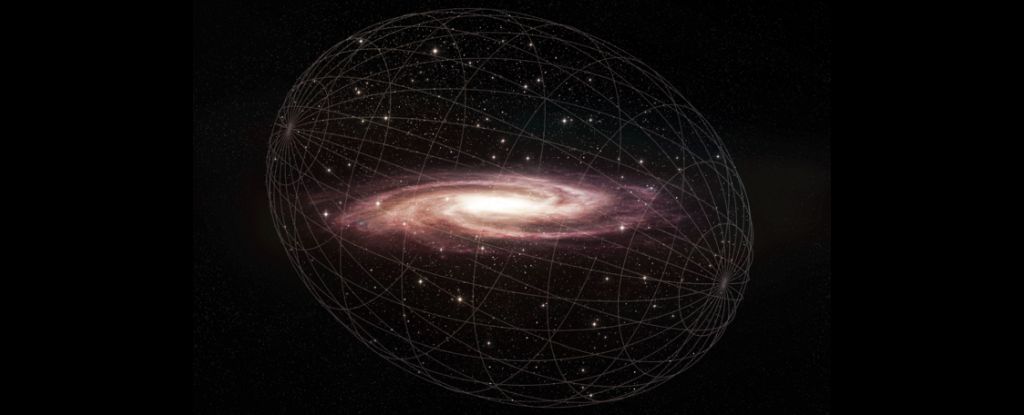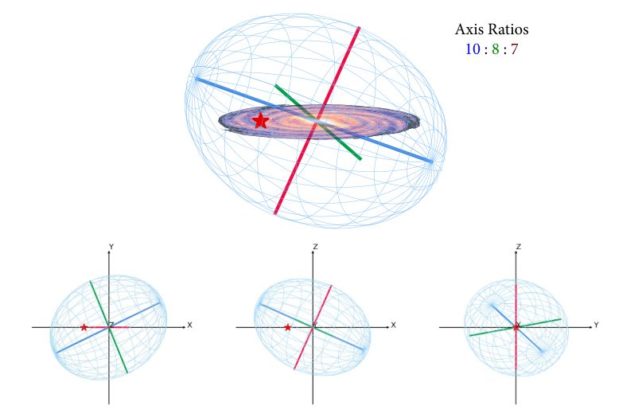

The Milky Way's Halo of Stars Isn't The Neat Sphere Astronomers Expected It to Be
SPACE
21 November 2022
ByMICHELLE STARR
Step outside of the Milky Way for a moment and you might notice the bright disc of stars we call home has a weird warp to it. Now it seems the rest of our galaxy is also a little off-kilter.
A new map of the stars above and below the galactic plane shows its galactic halo – the diffuse globe of gas, dark matter, and stars that surrounds spiral galaxies – is also wonky. Rather than the nice round sphere astronomers expected, the Milky Way's halo is a wibbly ellipsoid whose three axes are all different lengths.
"For decades, the general assumption has been that the stellar halo is more or less spherical and isotropic, or the same in every direction," says astronomer Charlie Conroy of the Harvard & Smithsonian Center for Astrophysics (CfA).
"We now know that the textbook picture of our galaxy embedded within a spherical volume of stars has to be thrown out."
Determining the shape of our galaxy is really difficult to do. Imagine trying to figure out the shape of a vast lake while you're bobbing around in the middle of it. It's only in recent years, with the launch of the European Space Agency's Gaia telescope in 2013, that we've gained a detailed understanding of the three-dimensional shape of our galaxy.
Gaia shares Earth's orbit around the Sun. Changes in the telescope's position in the Solar System allows it to measure the parallax of objects in the Milky Way, obtaining the most accurate measurements to date for calculating the positions and movements of thousands of distant stars.
Thanks to this data, we now know that the Milky Way's disk is warped and bent. We also know that the Milky Way has repeatedly engaged in acts of galactic cannibalism, one of the most prominent of which seems to have been a collision with a galaxy we call the Gaia Sausage, or Gaia Enceladus, around 7 to 10 billion years ago.
This collision, scientists believe, created the Milky Way's stellar halo. The Gaia Sausage tore apart as it encountered our galaxy, its distinct population of stars scattering through the Milky Way's halo.
